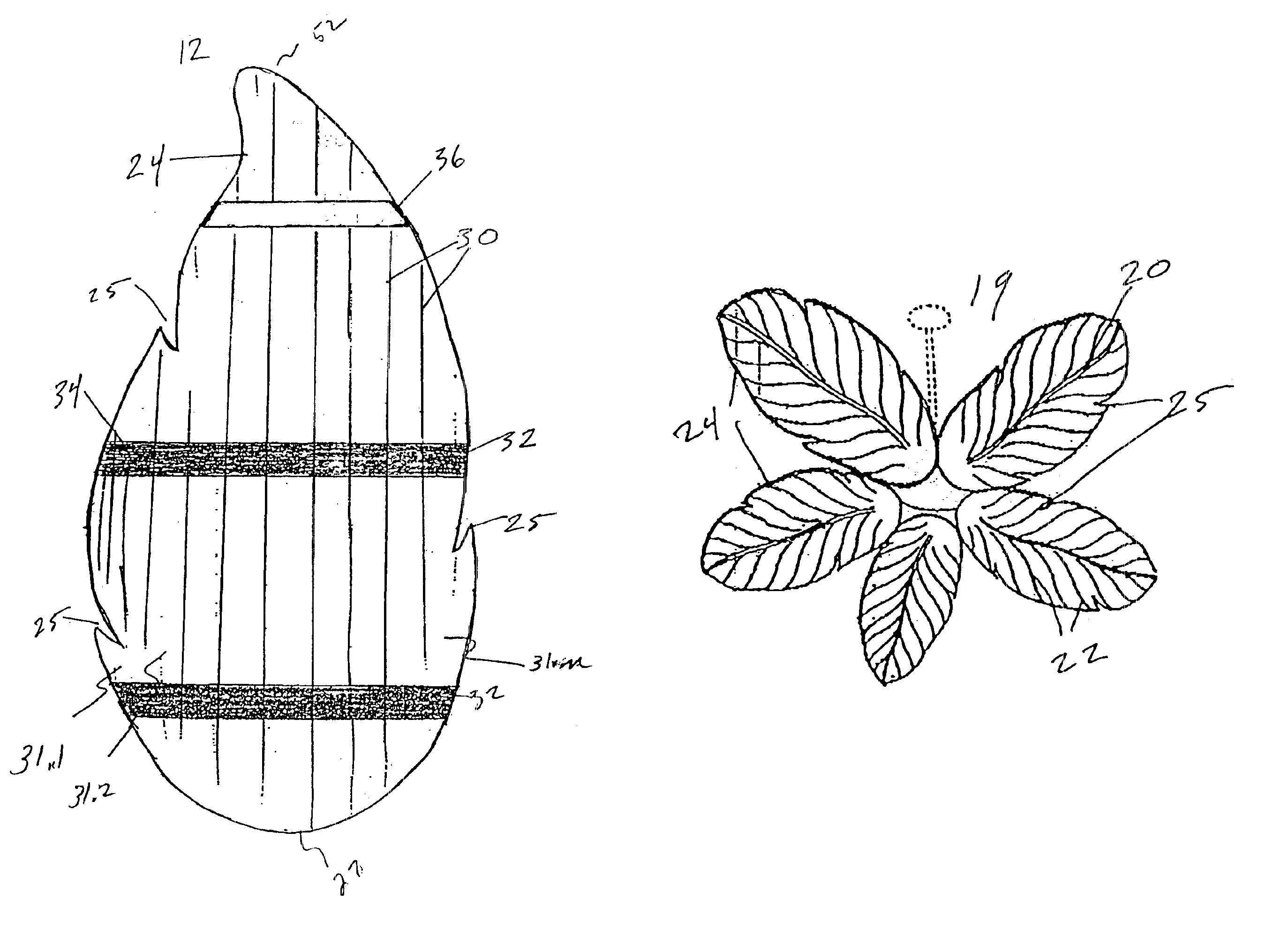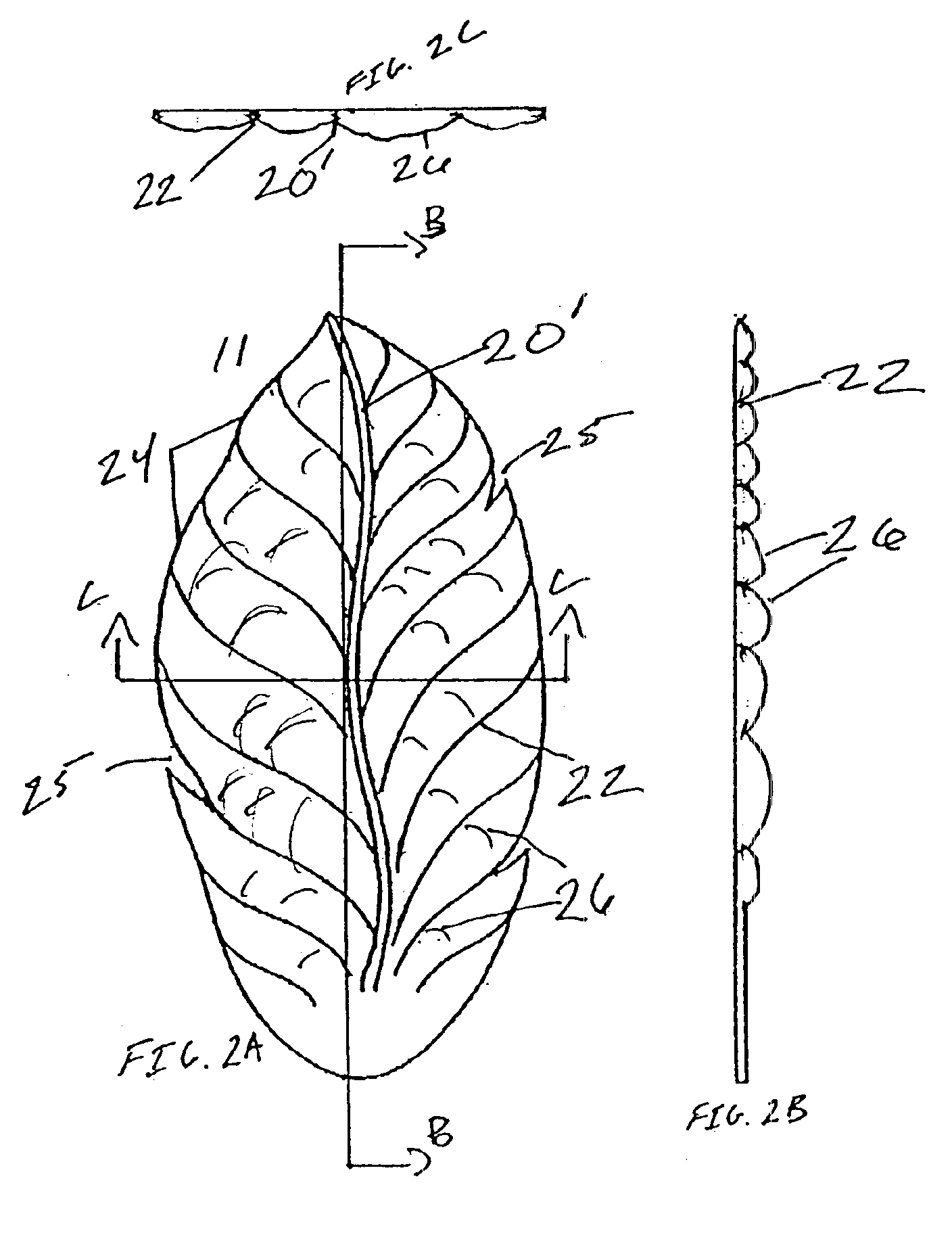Fan blade
a fan blade and fan blade technology, applied in the direction of machines/engines, mechanical equipment, liquid fuel engines, etc., can solve the problems of wood as a blade material having other problems, natural appearance, and plastic and metal being often too heavy
- Summary
- Abstract
- Description
- Claims
- Application Information
AI Technical Summary
Benefits of technology
Problems solved by technology
Method used
Image
Examples
embodiment 16
[0031]FIGS. 7, 8&9 are alternate surface patterns and shapes that might also be achieved by this process. Each will feature cross braces 32 arranged in the same manner as described above. In one alternate embodiment 16 the central vein 20 is straighter than is some other embodiments and the contoured sections 26 are more uniform. The lateral or peripheral veins 22 extend in an equally more uniform fashion. The undulating perimeter 24 remains, but the indentations 25 are removed.
embodiment 17
[0032]In a second alternate embodiment 17 the central vein 20 and the peripheral veins are less uniform and, again, serpentine. The contouring 26 is accordingly less uniform as is the undulation 24. One novel difference is the rounding of the indentations 25 around the perimeter.
embodiment 18
[0033]In a third alternate embodiment 18 the central vein is straight 20. The lateral veins 22 and contouring 26 are uniform, decreasing in size as the contouring 26 moves farther from the base 27. The perimeter does not undulate.
[0034]FIG. 10 is a rendering of the possible arrangement of the described blade as used in a ceiling fan.
[0035]It will be appreciated by those of ordinary skill in the art having the benefit of this disclosure that the embodiment of the transverse opposing grain bracing is capable of numerous variations without departing from the scope and spirit of the invention. It is fully intended that the invention for which a patent is sought encompasses within its scope all such variations without being limited to the specific embodiment disclosed above. For example, there are equivalent means for bracing the sheet or strips of wood. These include and are not limited to applying a fabric, such as a mesh, and glue to the reverse side to keep the strips together. The c...
PUM
| Property | Measurement | Unit |
|---|---|---|
| Length | aaaaa | aaaaa |
| Width | aaaaa | aaaaa |
Abstract
Description
Claims
Application Information
 Login to View More
Login to View More - R&D
- Intellectual Property
- Life Sciences
- Materials
- Tech Scout
- Unparalleled Data Quality
- Higher Quality Content
- 60% Fewer Hallucinations
Browse by: Latest US Patents, China's latest patents, Technical Efficacy Thesaurus, Application Domain, Technology Topic, Popular Technical Reports.
© 2025 PatSnap. All rights reserved.Legal|Privacy policy|Modern Slavery Act Transparency Statement|Sitemap|About US| Contact US: help@patsnap.com



